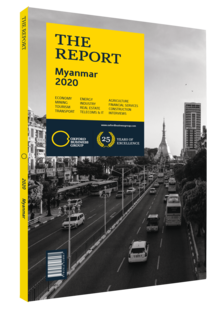Rorce Au-Yeung, Co-CEO, VPower Group: Interview

Interview: Rorce Au-Yeung
How would you describe the evolution of the power tendering process in Myanmar?
RORCE AU-YEUNG: Since 2014 there have been very encouraging developments in the legal and regulatory framework for energy tenders. Although Myanmar is not a market defined by certainty, there are well-established systems to operate within. Contracts can take some time to be fully negotiated, but once they are complete the implementation stage is straightforward. Power is in such demand that contracts have to be respected and well managed, making Myanmar an attractive environment for suitable players in the energy sector. While some challenges remain, it is most important that stability is maintained during any political uncertainty.
To what extent is the country’s energy shortage being adequately addressed?
AU-YEUNG: Above all, Myanmar needs short-term power solutions. The country is industrialising and positioning itself as an attractive global manufacturing base. To achieve its industrialisation aims, a stable electricity supply is vital. The country has the advantage of large domestic gas reserves, but they remain under-utilised, resulting in need for liquefied natural gas (LNG) imports. A positive outcome of importing LNG is that complex gas supply infrastructure is already under development, which would help to address the growing demand for electricity before more domestic gas reserves come on-line. Distributive power technology can also help bridge this gap. On the renewables side, solar and hydropower will continue to see strong growth. Myanmar’s physical geography lends itself well to renewable techniques, notably due to the large river systems stretching the length of the country, as well as the country being at an optimal latitude for solar farms.
Why has electricity demand risen in recent years?
AU-YEUNG: Infrastructure development is a key driver of increased demand for power. Behind this is the need for industrial zones, mass transit railways and toll roads, in order to facilitate economic growth. Due to Myanmar’s potential future growth, there is strong international interest in projects that will improve utilities and infrastructure in the country. Additionally, the US-China trade dispute may contribute to the further regional integration of South-east Asia as a hedge against global uncertainties. Myanmar has a long coastline, promising gas reserves, a growing consumer base and retail sector, and a good business culture – it represents a strong investment location in looking towards Asia. Notably, the New Yangon City Development has generated global interest as a potential long-term investment.
What are the wider energy trends in ASEAN, and how do they relate to Myanmar?
AU-YEUNG: Regional electrification rates are comparatively low; even industrial powerhouse Indonesia has not reached 100%. Compounding this rate is the fast growth of these economies, often adding more than 10% to electricity demand each year. For example, we have seen double-digit growth in electricity demand in the Yangon region, which consumes more than half of the total national electricity supply. Accelerated development can be unpredictable and often results in energy shortages. In addition, there are often difficulties quickly obtaining a long-term power source. While this is desirable, it is not always practical in an environment where demand is rapidly increasing. In Myanmar, for example, power supply is often needed for a project less than a year after the contract has been signed, resulting in the use of distributed power systems. In addition, budgetary constraints can make large-scale projects non-viable. This creates a situation where investment is needed in the short-, medium- and long-term power segments. However, this also makes ASEAN and Myanmar fast-growing markets for electricity. With efforts from local authorities and foreign investors, more people can enjoy reliable electricity,
You have reached the limit of premium articles you can view for free.
Choose from the options below to purchase print or digital editions of our Reports. You can also purchase a website subscription giving you unlimited access to all of our Reports online for 12 months.
If you have already purchased this Report or have a website subscription, please login to continue.

